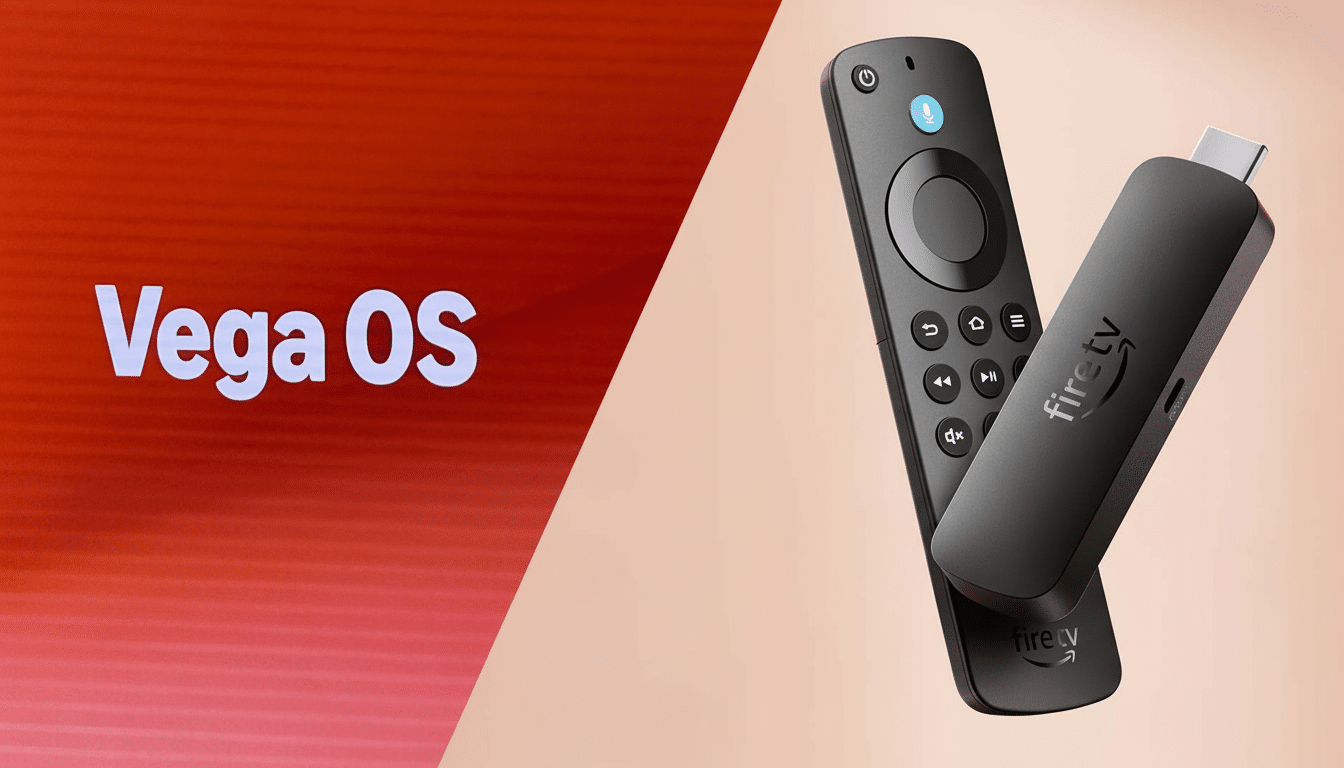Amazon has finally and officially shifted from Android-powered Fire OS by launching Vega OS, debuting on the new Fire TV Stick 4K Select.
It suggests a fundamental shift in Fire TV hardware and software, one where the point is faster performance on less demanding specs, more tightly controlled at the ecosystem level, and a clearer upgrade path for future devices designed around Amazon’s own stack.

What Vega OS changes for Fire TV devices and experience
Vega OS is built to be light and fast, and Amazon has the Fire TV Stick 4K Select on hand to help demonstrate that. The streamer comes with 1GB of RAM — about half as much as what recent 4K-class Fire TV sticks have featured — but Amazon says apps open a lot faster. That means a smaller system footprint, better app lifecycle management, and closer reins on background processes that used to bog down more affordable silicon.
Picture quality support plays out along mainstream lines, not going too far but still delivering 4K output with HDR10+. The interface is the same familiar Fire TV layout, which lowers friction for existing users who don’t want to relearn how to navigate. Effectively, Amazon is “swapping out the engine without redesigning the cockpit,” which should help with adoption, as it modernizes the platform beneath.
App compatibility and limitations at Vega OS launch
App coverage, of course, is where any new operating system lives or dies. At launch, Amazon says the Fire TV Stick 4K Select supports all of the major streaming services, including:
- Netflix
- Prime Video
- Disney+
- Hulu
- Max
- Paramount+
- Peacock
- BBC iPlayer
- Pluto TV
- Plex
- Starz
- Sling
- Tubi
- DirecTV
Cloud gaming over Xbox Cloud Gaming and Amazon Luna, and enhanced Alexa support are on the roadmap.
There are trade-offs. With Vega OS not being a fork of Android, sideloading is more or less out of the question. Amazon is guiding all installs through the Amazon Appstore, which simplifies security and payments, but it also shuts down a popular workaround for many Fire TV tinkerers. For the vast majority of households that rely on mainstream streaming apps, the change will be seamless; for power users who install utilities as well as niche players, it’s a huge deal.

To devs, Vega OS means one storefront of data, one set of APIs, and Amazon’s tooling and certification process. The reason is clear: Fire TV has a built-in audience and top-tier merchandising spots. The hard part will be porting — or adapting to far lower performance — the apps that used to target Android frameworks. It will be crucial for Amazon to execute strong SDKs and predictable review times to maintain the health of the content pipeline.
Why Amazon is moving on from Android for Fire TV
By owning the operating system, Amazon has end-to-end power over performance and privacy — and where it wants to take the product. It helps reduce reliance on Android updates, staves off policy whiplash, and can unlock new revenue levers — from advertising to commerce integrations baked directly into the UI. Industry history supports the approach: Roku’s homegrown OS drives over 80 million active accounts, and Apple’s tvOS anchors deep services integration on Apple TV. For its part, Google claims more than 220 million monthly active devices on Android TV OS, according to the company — evidence that platform scale counts for a lot.
Analysts have long contended that streaming platforms win by combining low-cost hardware with a sticky software experience. By optimizing Vega OS for efficiency, Amazon can reach a highly aggressive price point without compromising responsiveness and then monetize it via sources such as Freevee, live FAST channels, and on-device sponsorships. Companies like Omdia and Parks Associates have reported on how smart TV and streaming OS makers are increasingly using a variety of advertising tech, recommendation engines, and commerce tools — not raw specs.
Early value and buyer takeaways for Fire TV shoppers
With a price tag of $39.99, the Fire TV Stick 4K Select is targeting mainstream homes that just want solid 4K HDR streaming at an affordable cost, no frills needed. You can preorder it now, with shipping starting soon. If your daily mix is the standard batch of Netflix, Prime Video, and sports apps, then the app offering looks pretty good on day one, and you won’t be facing any new interface peculiarities to get set up.
Gamers and smart-home users get a tangible roadmap: cloud gaming support for Xbox Cloud Gaming and Luna is on tap, as are deeper Alexa capabilities. The big red warning about not upgrading would be if you’re depending on sideloaded apps or utility applications; in that case, the shift away from a model of app distribution with no controls does “change the game.”
The bigger story is strategic. The move to Vega OS isn’t so much about one stick as a platform wipe, which allows Amazon to iterate more rapidly and control every pixel of the experience down to the TVs themselves. If the 4K Select does deliver on those performance promises in living rooms, you can expect Vega OS to spread across future Fire TV sticks and cubes as well as partner TVs — quietly turning what appears to be a low-cost streamer into the first chapter of a new software era for Amazon’s entertainment ecosystem.

